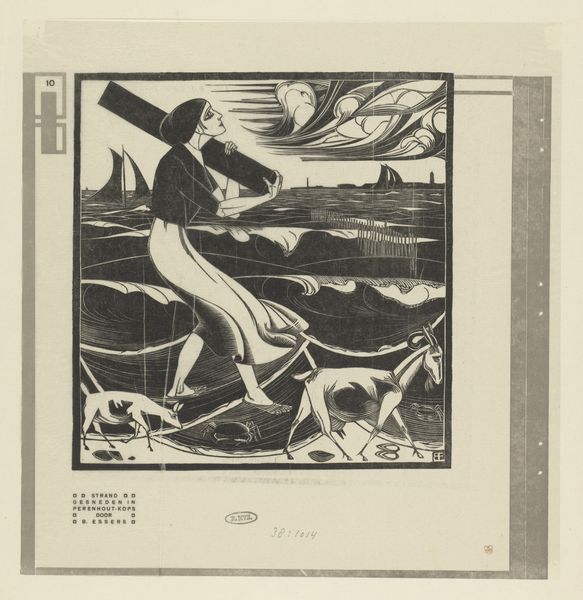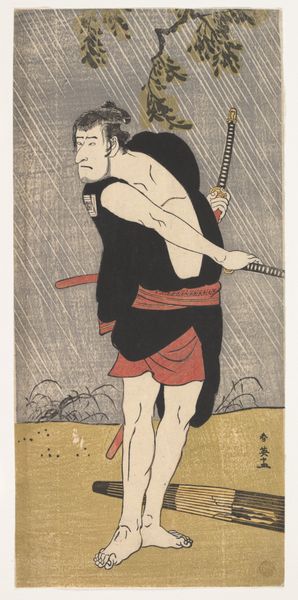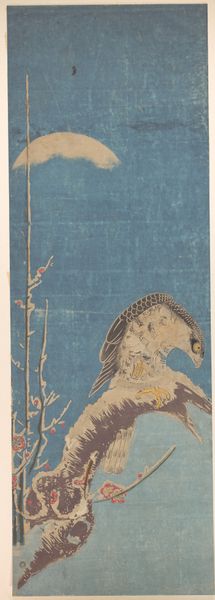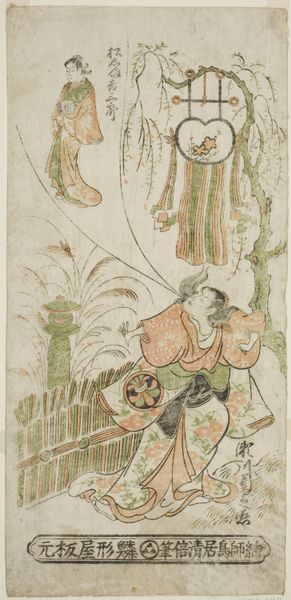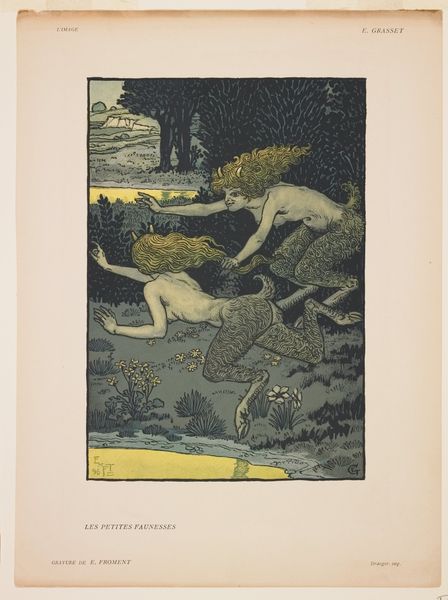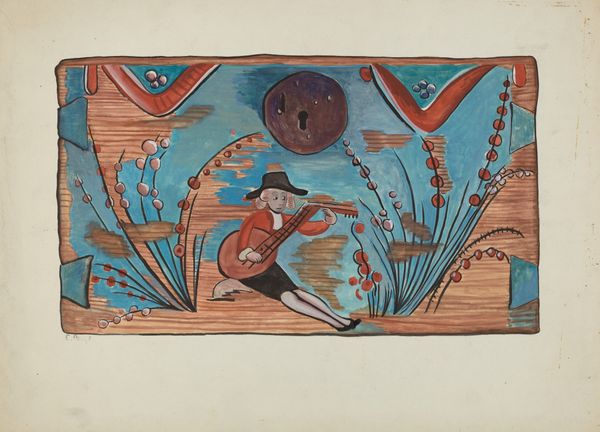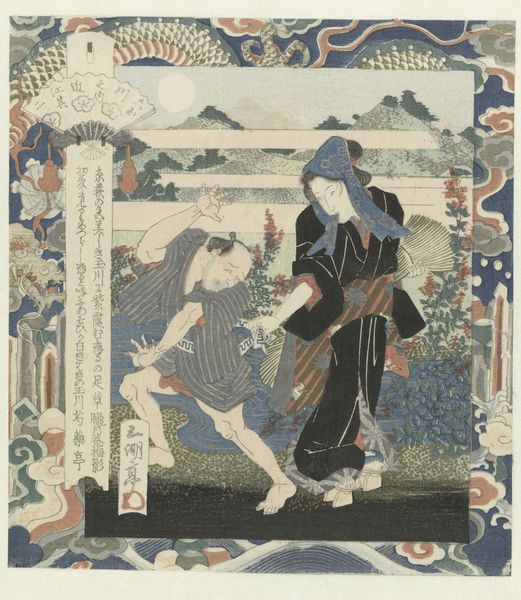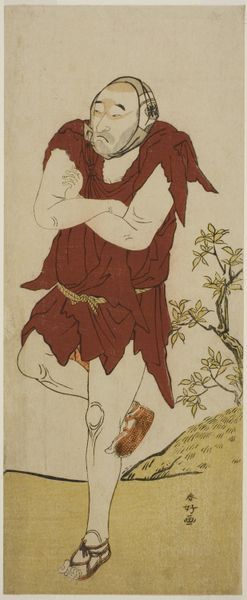
graphic-art, print, woodcut, poster
#
graphic-art
#
art-nouveau
# print
#
landscape
#
caricature
#
figuration
#
woodcut
#
symbolism
#
poster
#
watercolor
Dimensions: 10 1/16 x 8 7/16 in. (25.56 x 21.43 cm) (image)15 3/8 x 11 3/4 in. (39.05 x 29.85 cm) (sheet)
Copyright: No Copyright - United States
Editor: Allen Lewis's "Spring," a woodcut from around 1920, depicts a figure in a landscape. The colors are muted, almost dreamlike. She seems to be running toward us, or perhaps running *from* something? What story do you think this piece is trying to tell? Curator: Ah, it sings of metamorphosis, doesn’t it? A faerie caught between realms, a burst of color against the receding snows. Notice the flatness, that Art Nouveau penchant for simplification? It almost renders the figure weightless, a mere suggestion of form. Is she fleeing winter, clutching the first blooms? Or is it we who are running toward her, toward the promise of rebirth? And that single tree on the horizon, sentinel against the changing seasons… it’s a poem in miniature. What does it whisper to you? Editor: I guess it feels a bit ambiguous. I see what you mean about the flat planes. Is it a deliberate choice, to make it feel more symbolic and less real? Curator: Precisely! Lewis wasn't just recording a scene; he was capturing an *idea*, a feeling. Spring isn't just a season; it's a longing, a memory, a potential. The simplified forms become universal, a stage for our own interpretations. Doesn’t it make you want to shed your winter skin and run barefoot into the world? Editor: Absolutely! I was so focused on the figure running, I didn't fully consider what she represents. I'm also drawn to how a medium like woodcut can influence and limit expression, and also bring definition. Curator: Yes! The crisp lines of the woodcut contribute to the stylized, almost archaic feel. I suppose for me, art like this offers a reminder that even in the starkest lines, in the simplest forms, there's boundless possibility for dreaming. Editor: I'll definitely think about it that way from now on!
Comments
No comments
Be the first to comment and join the conversation on the ultimate creative platform.
